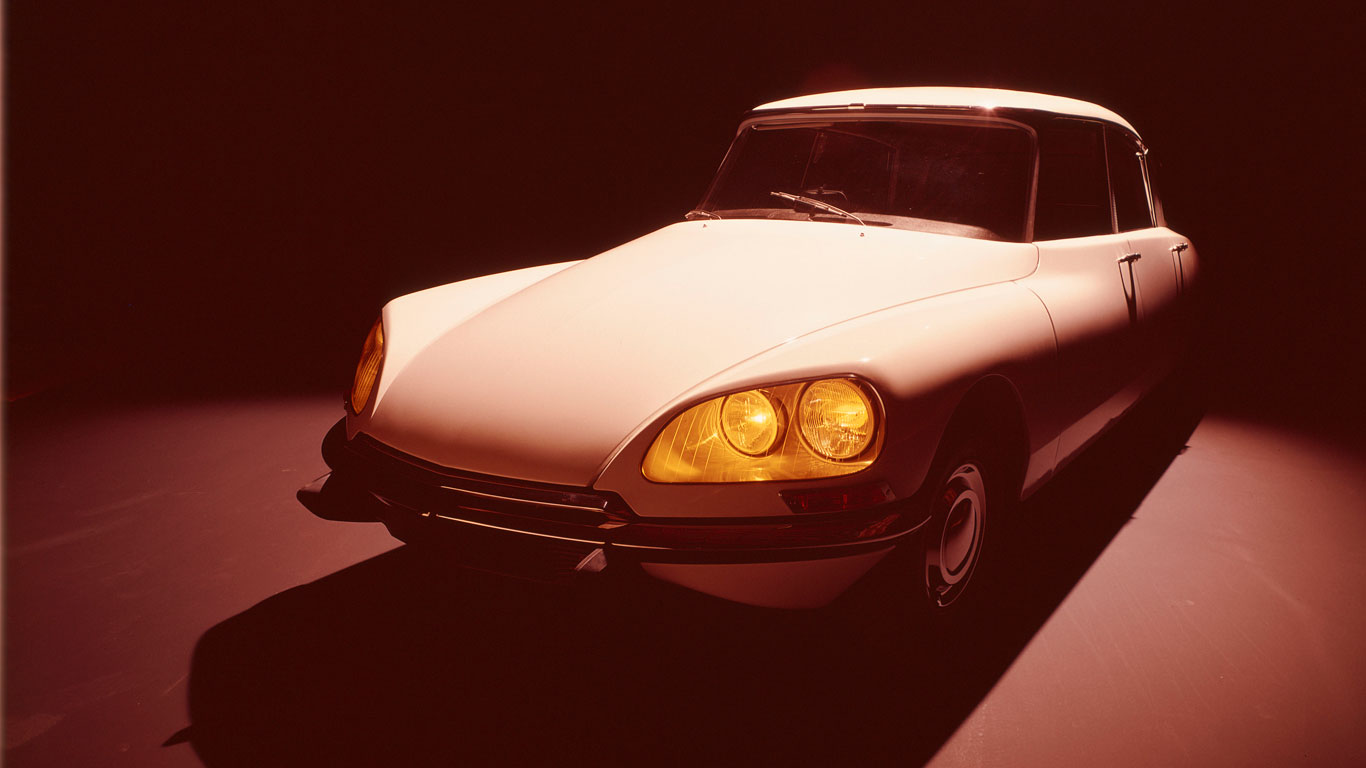
She may be 63 years old, but the Goddess looks as good today as she did when she stole the show at the 1955 Paris Motor Show. So, by way of a tribute to one of the greatest cars of the 20th century, we felt compelled to celebrate the life and times of a French masterpiece. The Citroen DS: this is your life.
Launched at the Grand Palais des Expositions, Paris
The Citroen DS stopped people in their tracks when the covers were pulled off at the Grand Palais des Expositions in Paris. Quite simply, it was a revelation.
Replaced the Citroen Traction Avant
It replaced the hugely successful but ageing Citroen Traction Avant. Like the DS, the Traction Avant – which is French for ‘front-wheel-drive’ – was a landmark car. But unsurprisingly, some 20 years on from its launch, it was in need of replacement.
DS is French for Goddess
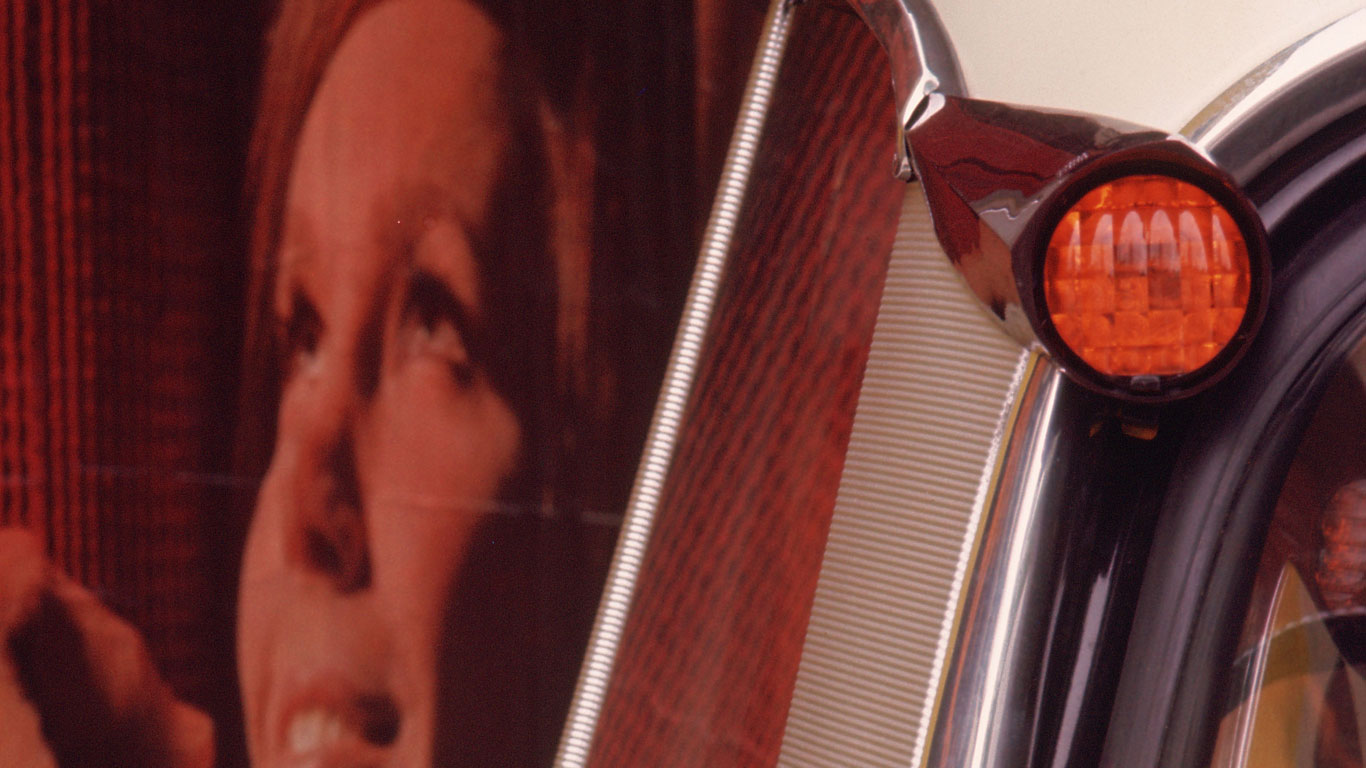
Step forward the Citroen DS, which stands for ‘Déese’, which in turn is French for ‘Goddess’. It’s pronounced “day ess”, which could be an important thing to remember if you’re at a dinner party discussing the most important cars of the past 100 years.
One of the greatest cars of the 20th century?
It can lay claim to being one of the most significant and perhaps greatest cars of the 20th century. In most polls, the Citroen DS is placed in the top 10, more often than not in the top five.
Third in the Car of the Century awards
Indeed, the Citroen DS came third in the Car of the Century awards, beaten only by the Ford Model T and the Mini. It was also named the most beautiful car of all time by Classic & Sports Car magazine.
The DS was a true show-stopper
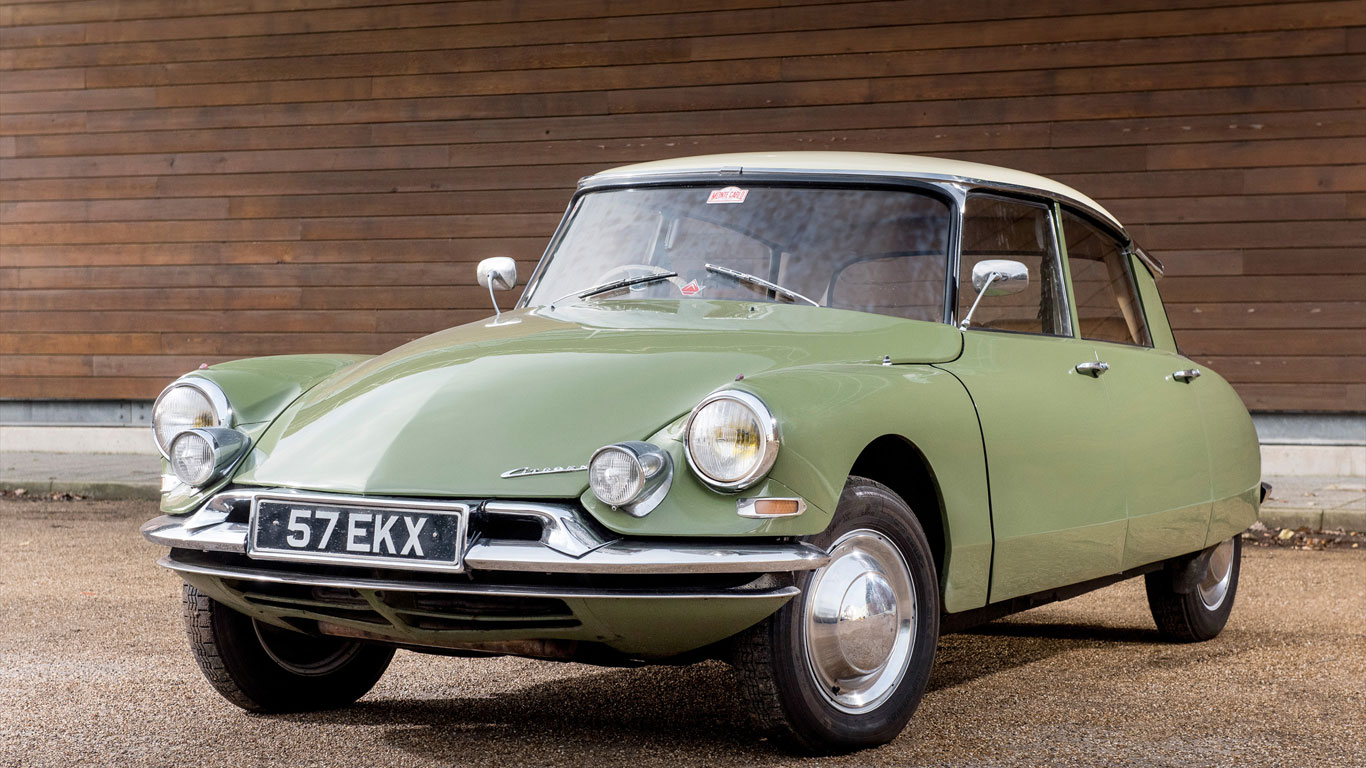
But just what makes the Citroen DS so special? Let’s remember that the DS arrived in 1955, a time when Europe was still recovering from the effects of World War II. Here was a car quite unlike anything that had gone before – this was a true show-stopper.
Codenamed the VGD
Work had begun on the Citroen DS soon after the launch of the Traction Avant in 1934. It was codenamed VGD, which stood for ‘Voiture á Grand Diffusion’, or ‘mass-produced car’. Developed alongside it was the Toute Petite Voiture (TPV), or very small car.
Developed alongside the Citroen 2CV
It was World War II that saw the VGD project being mothballed in favour of the TPV, a project that would culminate in the arrival of the Citroen 2CV in 1948. Two cars of equal significance but hugely different purposes.
Transforming the hippopotamus
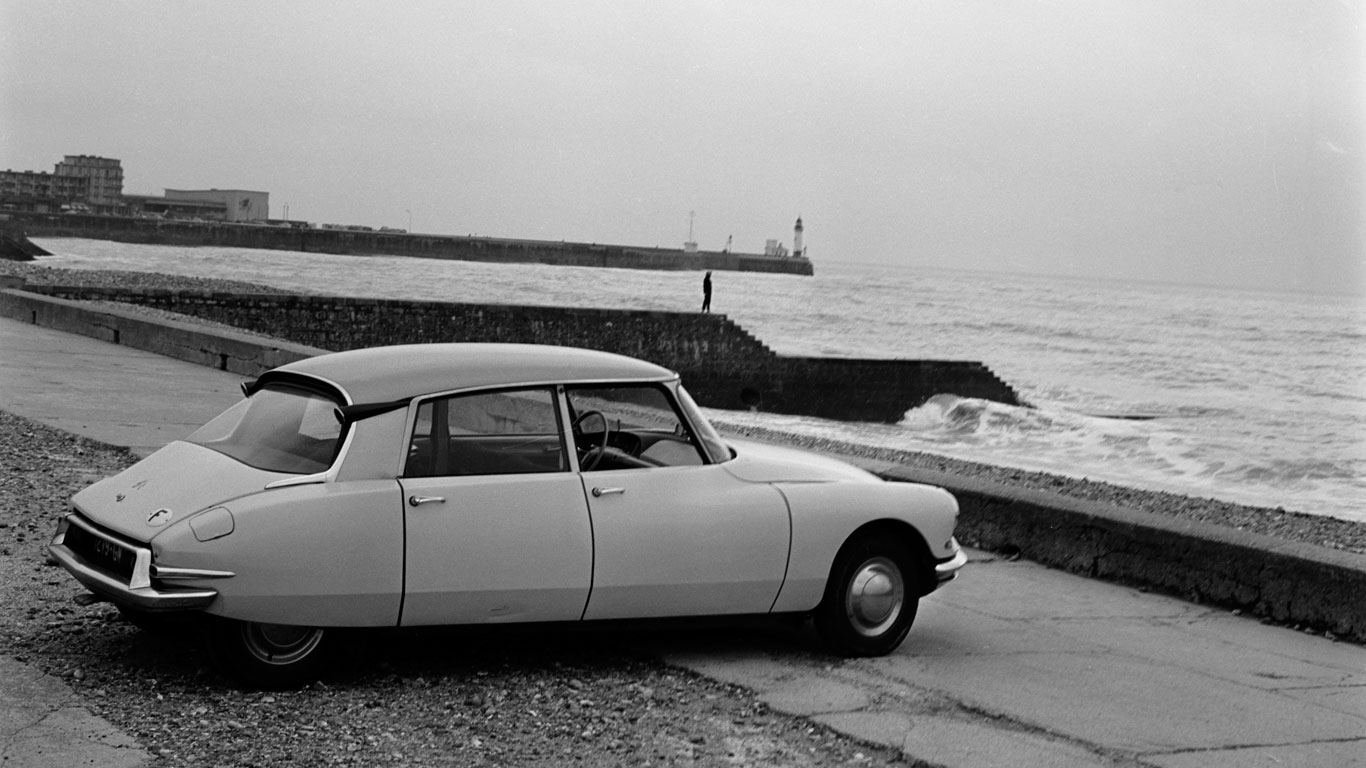
By the early 1950s, work had restarted on project VGD. Flaminio Bertoni, Citroen’s chief stylist, was responsible for transforming early prototypes that had earned an unfortunate hippopotamus nickname into something worthy of the Goddess name tag.
Tested on the roads of southern France
The development of the Citroen DS was a closely guarded secret and Citroen’s bosses went to great lengths to keep things under wraps. Early prototypes were spotted on the roads of southern France, much to the annoyance of Pierre Bercot, Citroen’s managing director.
No teaser campaigns for the Citroen DS
Angered by the test cars being spotted in the wild, Bercot heightened security and ensured no further leaks would occur. Unlike today, there would be no teaser campaigns and no pre-show images. The world would have to wait until the 1955 Paris Motor Show.
A new flat-six engine for the Citroen DS?
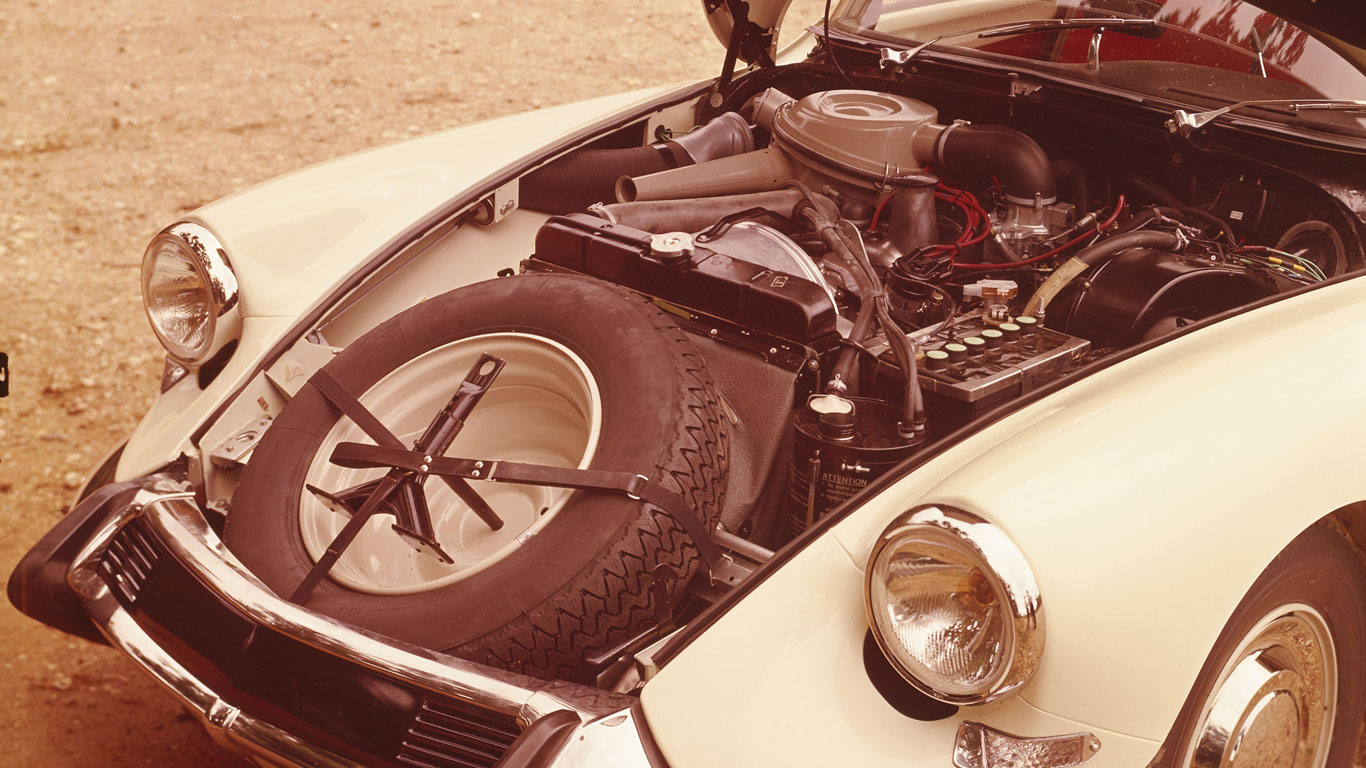
Citroen had planned to utilise an entirely new flat-six engine for the Citroen DS, something that would have undoubtedly matched its forward-thinking design and engineering. It wasn’t to be, as the development work would have proved too costly.
Used the four-cylinder engine of the Traction Avant
Instead the Citroen DS had to ‘make do’ with the 1911cc, four-cylinder engine of the Traction Avant. It would be years before the DS received the engine it deserved, although the public seemed unconcerned.
Causing a stir
The Citroen DS was unveiled to a packed Paris Motor Show at 9am on Thursday 5 October 1955. At the same time, a number of DSs were being driven through the crowded streets of Paris. They caused quite a stir.
Arrival
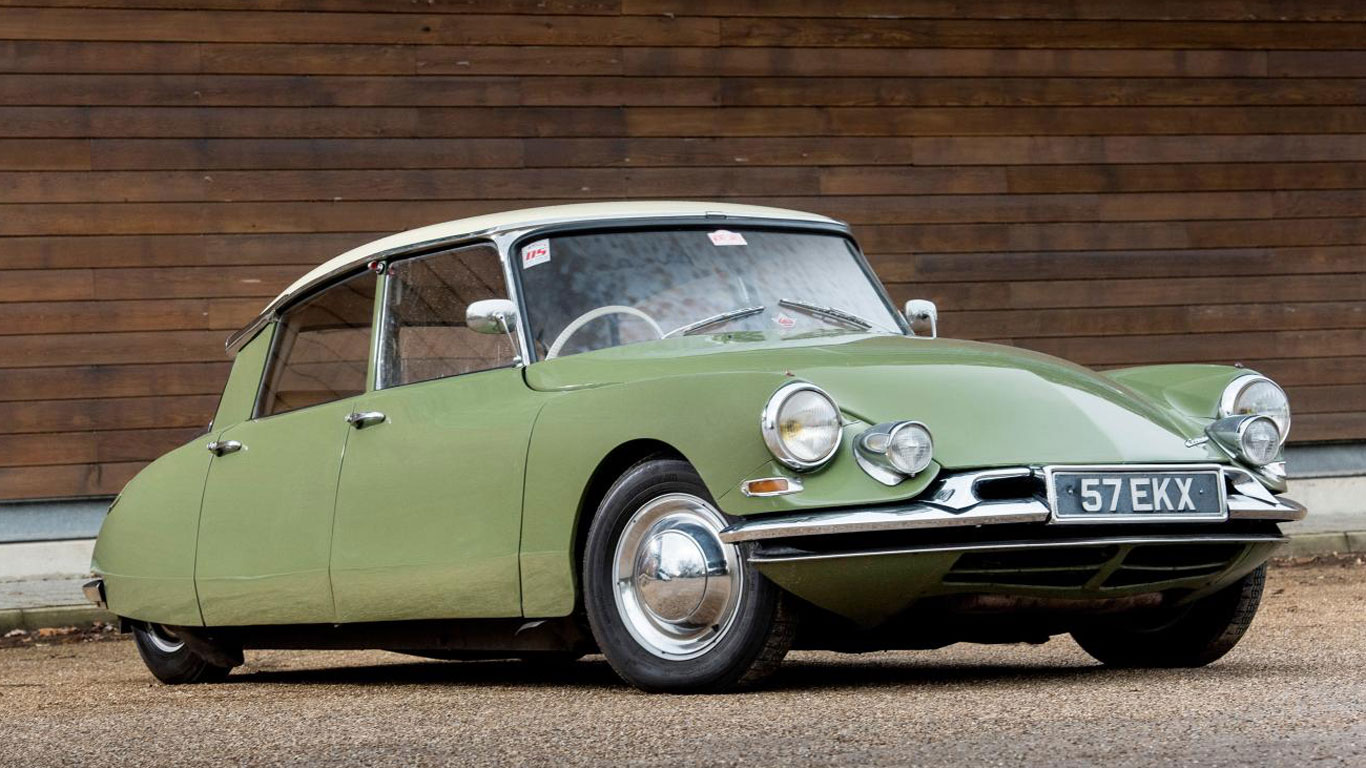
Within minutes of its unveiling, Citroen had received over 700 orders for the DS. By the end of the day, that number had increased to 12,000. The Citroen DS had arrived.
79,000 orders by the end of the show
By the time the Paris Motor Show was over, Citroen had received 79,000 orders for the DS. Everyone wanted to be associated with the Goddess and its film star looks. But this beauty was more than just skin deep.
Aerodynamic styling of the future
The Citroen DS was a big car, stretching 189 inches from bumper to bumper. Its aerodynamic styling was like something from the future and motorists weren’t accustomed to seeing cars with frameless doors and without radiator grilles.
Hydropneumatic suspension
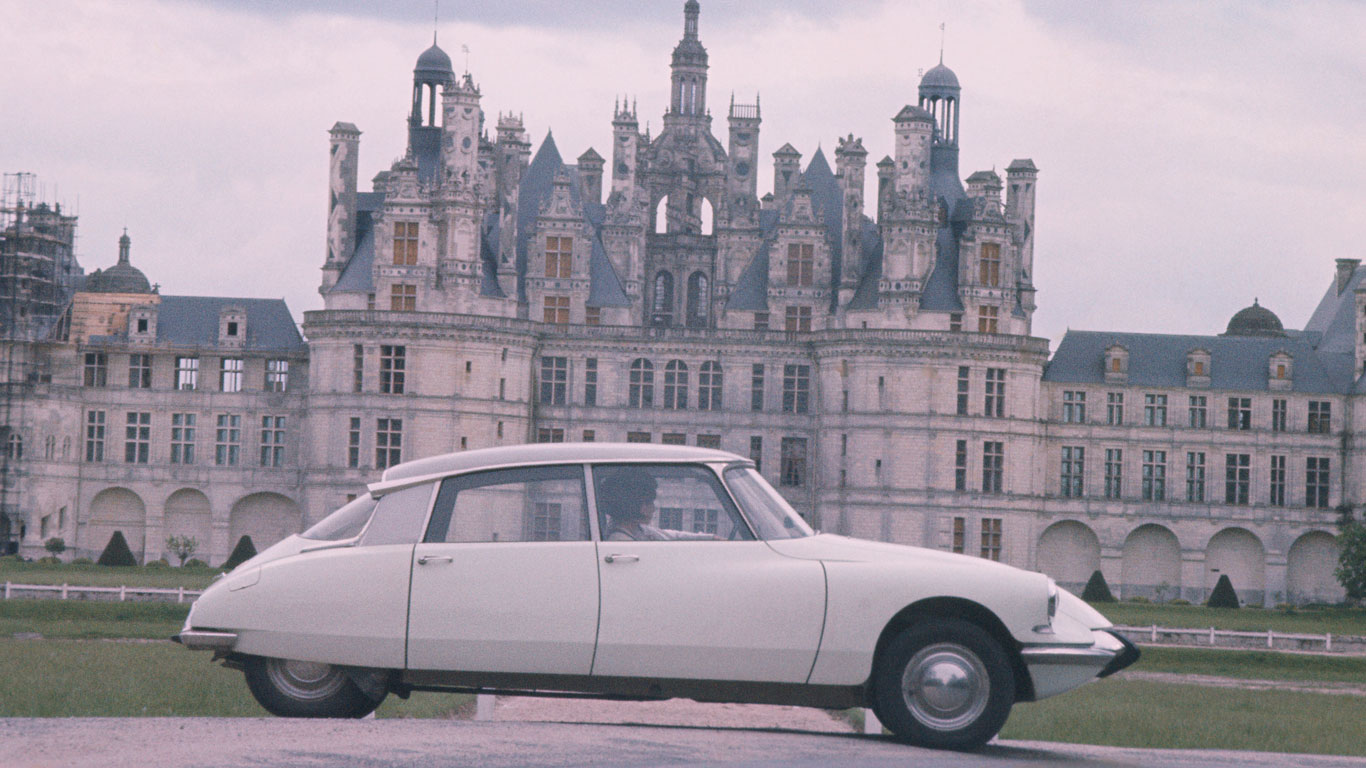
The Citroen DS’s chief party trick was its hydropneumatic, self-levelling suspension. The ride height could be controlled from inside the car and it meant the DS would give its occupants the feeling they were riding on a cushion of air.
Aircraft-inspired hydraulic circuits
But that wasn’t all. The Citroen DS – known officially as the DS19 – featured powered brakes, power steering and a powered gear selection system. They worked by using high-pressure hydraulic circuits typically found on an aircraft.
Nobody had a clue how these things worked
Perhaps unsurprisingly, such complex mechanicals brought with them one or two issues. Aside from the development team, nobody had any idea how these things worked. Security had been so tight, Citroen hadn’t thought to brief the Citroen workshops.
Workshop manuals were required
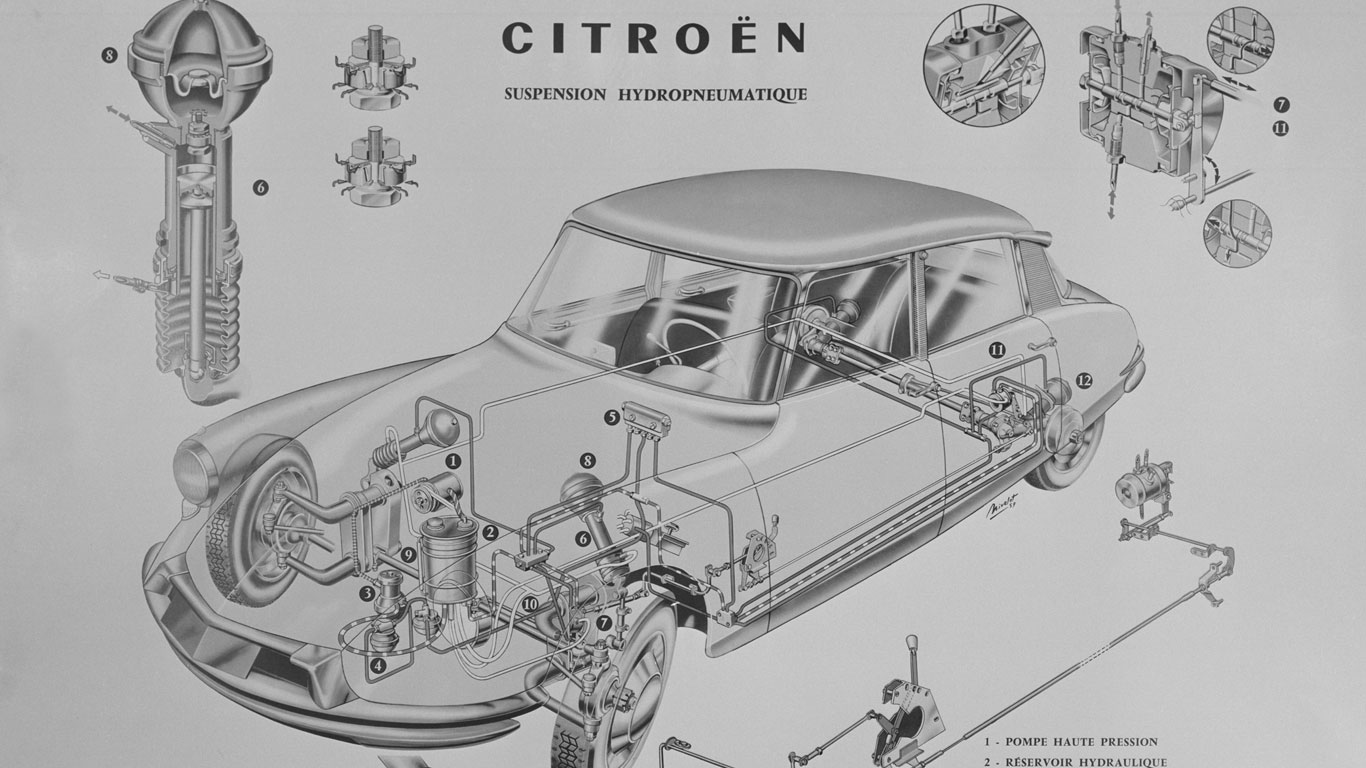
Many owners found themselves with no steering, brakes, gearbox or suspension, and would have been stood scratching their heads wondering what on earth to do to fix the problem. Under the warranty agreements Citroen had to repair them, so workshop manuals and diagrams were quickly drawn up.
Some cars were built in Slough, UK
This caused particular problems in Slough, where Citroen produced a number of UK-built DSs. Citroen wasn’t keen on releasing details of the complex suspension system, not even to the factory in Slough. This didn’t make things easy for Citroen’s UK arm or indeed its customers.
UK cars were subtly different
The UK-built Citroen DS cars were subtly different to those built in France, most notably the number plate holder and Lucas light lenses at the back of the car. Small changes were also evident on the inside.
Revolutionary interior
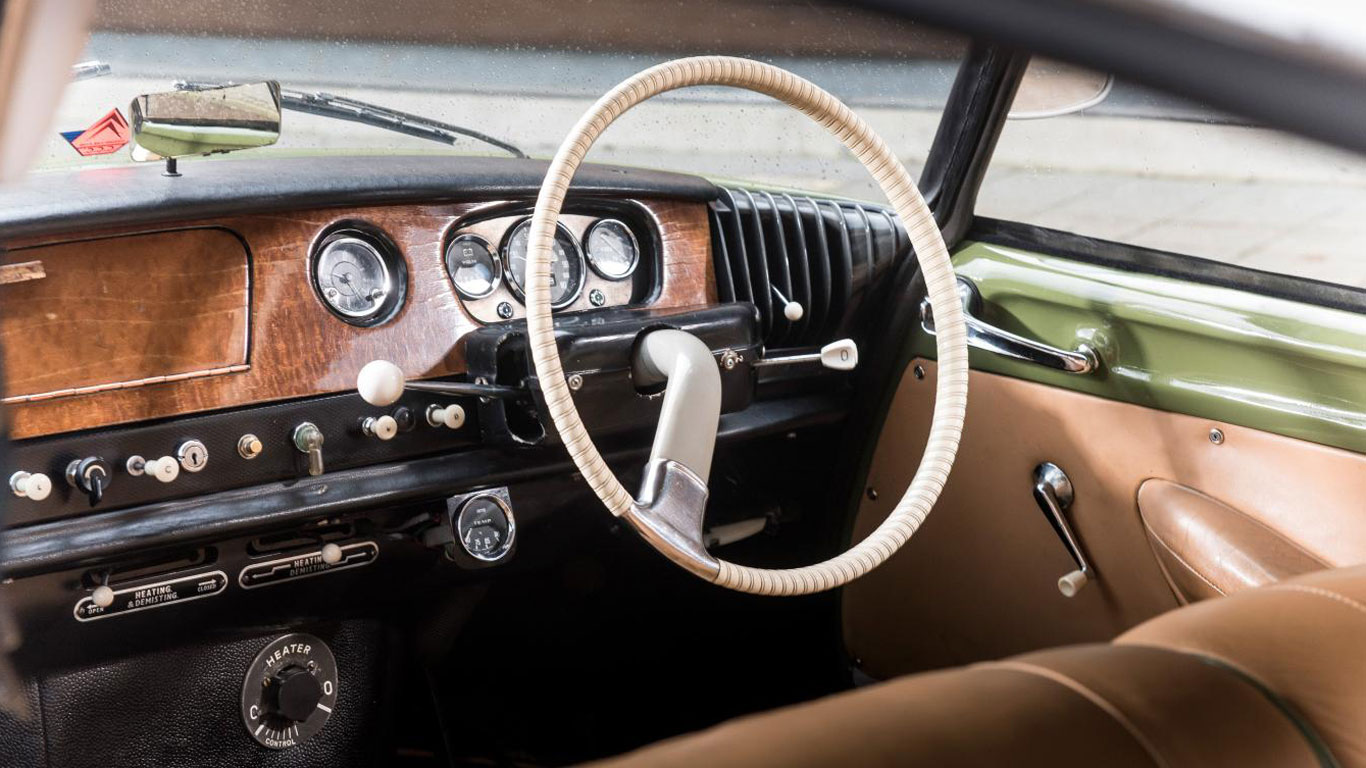
Flaminio Bertoni’s interior design for the Citroen DS was nothing short of brilliant. The signature piece was the single-spoke steering wheel, which sat in front of a revolutionary thermoplastic dashboard. In the UK this was created by a vacuum forming process, as opposed to the injection moulding method used in France.
Waiting lists of 18 months
The Citroen DS19 had hit the ground running. Notwithstanding the rather lacklustre engine and the initial problems surrounding the hydraulics, the DS had generated a tremendous amount of goodwill. Waiting lists extended to 18 months, with motorists desperate to spend quality time with the Goddess.
A very expensive car
But there was a problem. A Citroen DS19 cost £1,726 including purchase tax, making it more costly than a Mk11 Jaguar (£1,711) and a Rover 105 (£1,696). Such a revolutionary design costs money. But what of those who didn’t have the means to afford such a car?
The Citroen ID19 was born
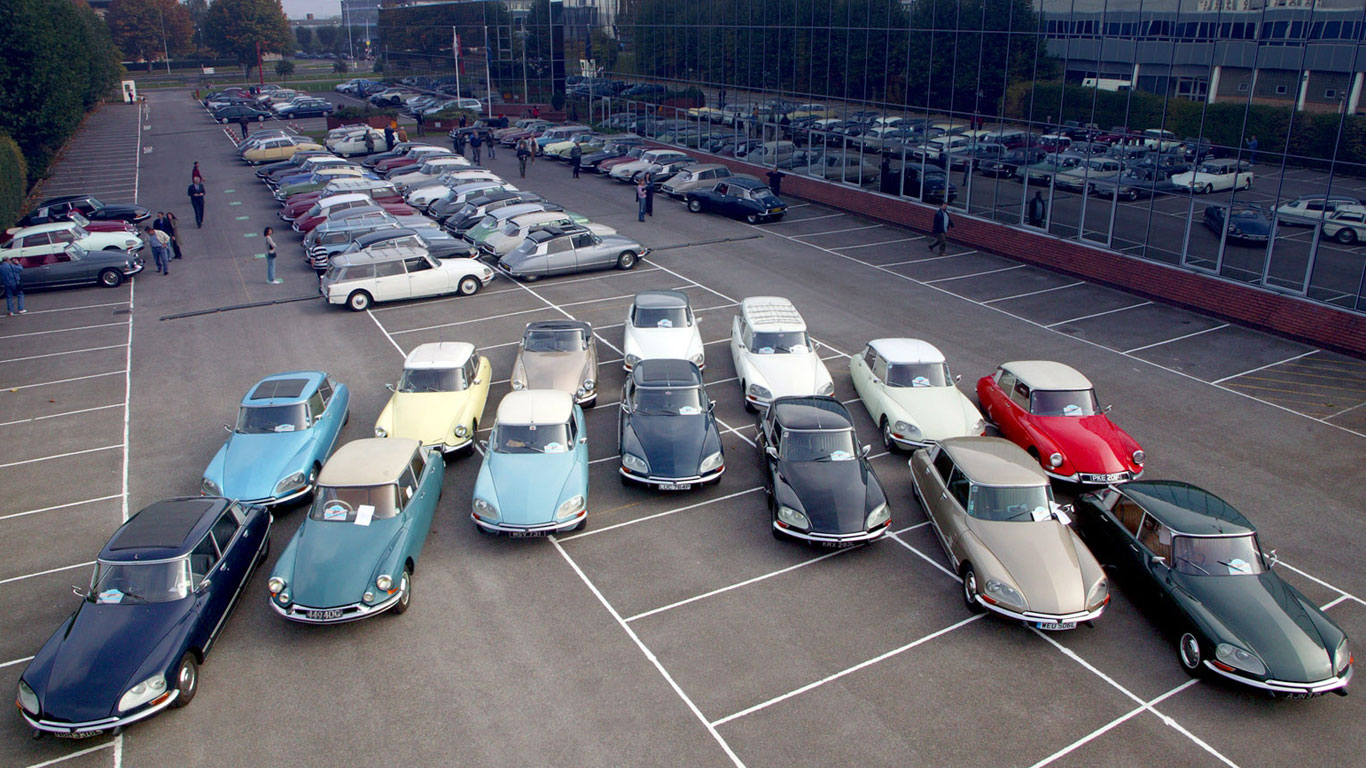
Step forward the Citroen ID19, a cheaper alternative to the DS19. It retained the engine of the DS19, albeit with reduced horsepower, but it lacked the revolutionary dashboard and the hydraulic brakes, gears and steering. That said, it did offer the hydropneumatic suspension.
ID – a good idea
In keeping with the approach to naming adopted for the DS, the ID was short for ‘Idée’, or ‘Idea’ in French. Naturally, the DS19 was still the one to have, but hats off to Citroen for making the basic design accessible to more people.
The Citroen DS Break
The ID had arrived in 1956, but the range grew further in 1958 to include the DS Break, otherwise known as an estate or station wagon. These cars were aimed at commercial buyers as well as growing families.
Familiale or Commerciale
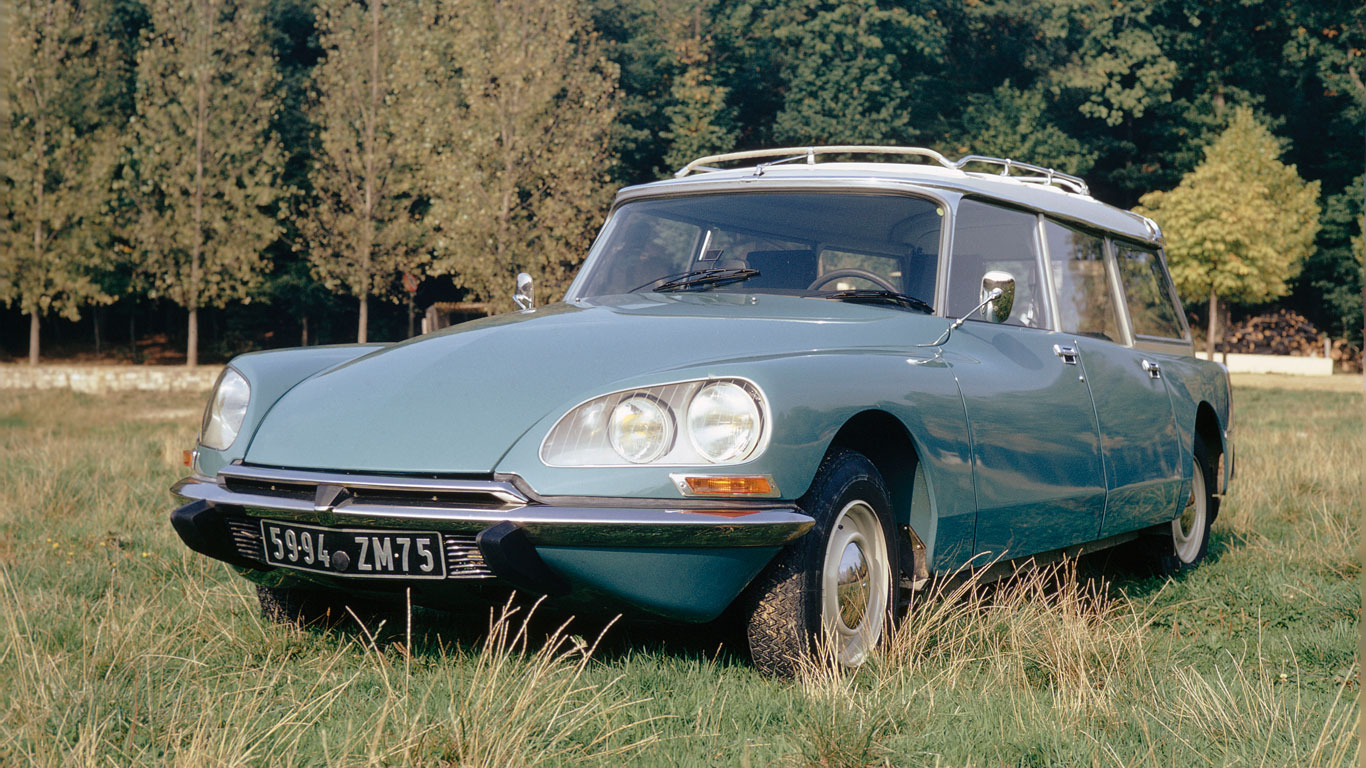
The Familiale versions offered three rows of seats, either in 7-seater or 8-seater guise, while the Commerciale was aimed more at businesses and artisans. Their practicality was enhanced by a roof rack and a two-piece tailgate.
Citroen DS Decapotable
But the DS didn’t stop there, because in 1958 Citroen bowed to public pressure by building a Decapotable or cabriolet version. Coachbuilders had already been making their own versions of a topless DS, so it was inevitable that Citroen would do the same.
A very expensive version
The DS Decapotable looked stunning, almost as though it was destined to be a drop-top from the start. But it didn’t come cheap and a price tag more than double that of a standard car meant that few were produced. A total of 1,365, in fact.
Citroen wins the Monte Carlo Rally
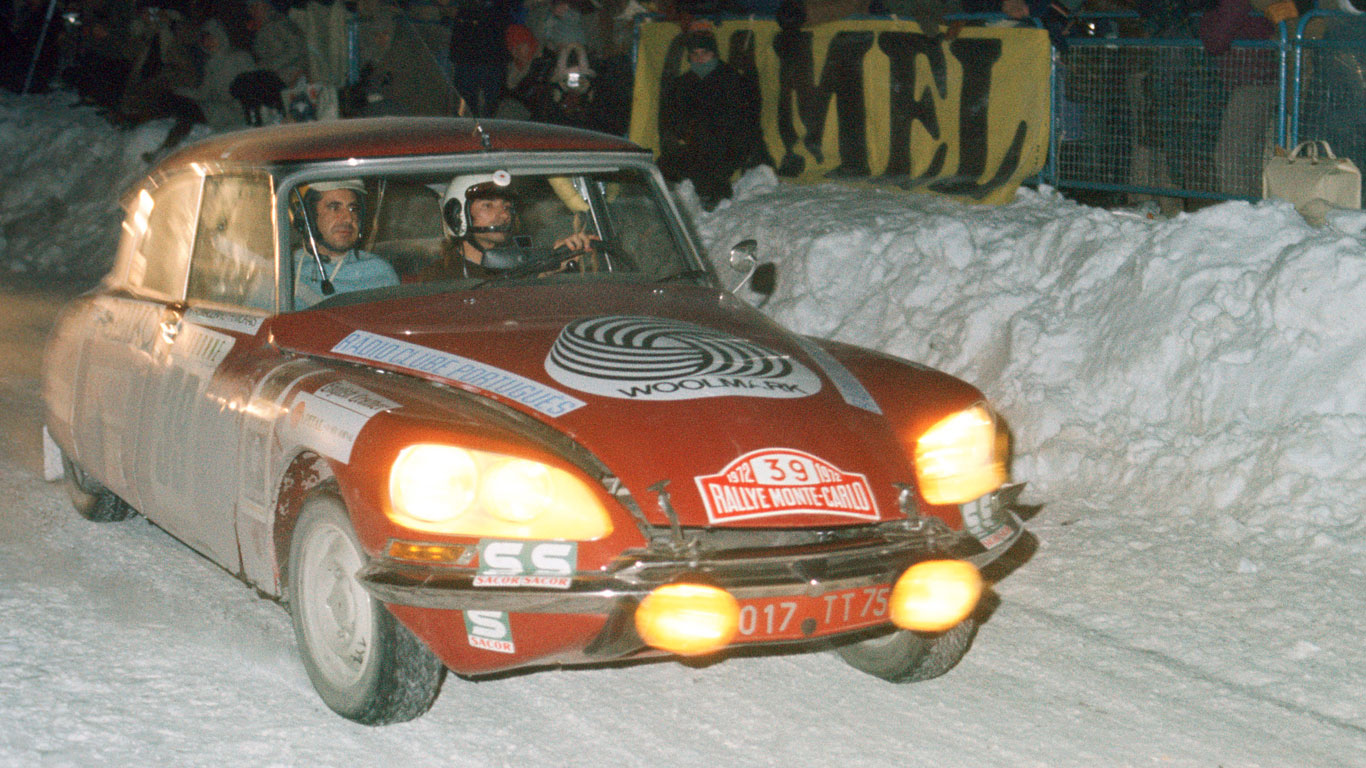
Amazingly, the Citroen ID19 also enjoyed success in motorsport circles, including a win in the 1959 Monte Carlo Rally and again in 1966 when the disqualification of four Mini Coopers resulted in the fourth place Citroen being propelled to the overall winner.
Citroen DS Pallas
The DS/ID would continue to evolve throughout the 1960s and Citroen added a range-topping Pallas model. The Pallas featured a host of external trim upgrades, including full wheel covers, chrome and brushed aluminium trim and two extra driving lights.
Citroen DS Pallas interior upgrades
The Citroen DS Pallas also featured better noise insulation, luxury velour upholstery and – if required – optional leather.
A car fit for royalty
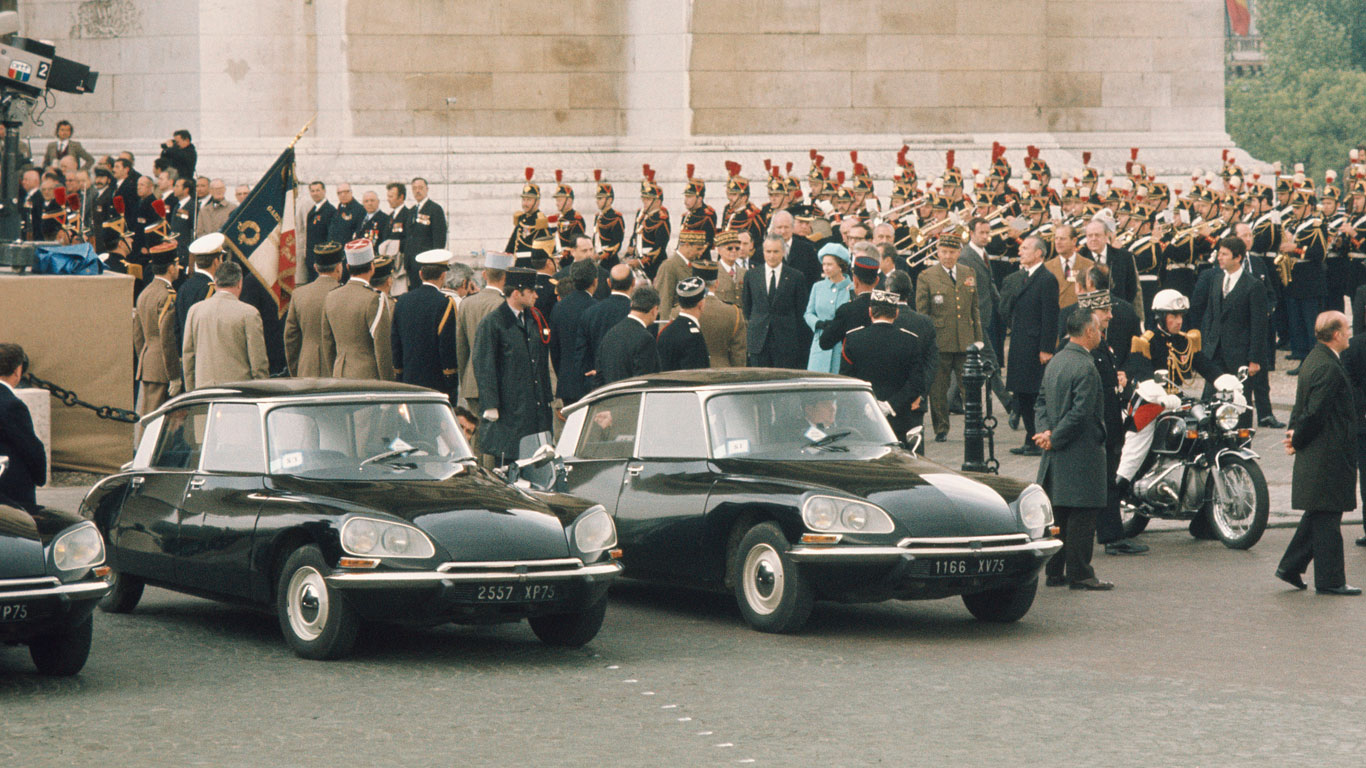
Unsurprisingly, the great and the good of France were keen to be associated with the Citroen DS, as can be seen here, with a number of DSs being used for ministerial duties during the visit of the Queen in 1972.
Charles De Gaulle survives an assassination attempt
The Citroen DS is also credited with saving the life of President Charles De Gaulle in 1962. A group called the OAS opened fire on the car with a hail of 140 bullets. The windows were shattered and all four tyres were punctured, but, thanks to the suspension system, the DS was able to be driven away from the scene.
Engine developments
Further engine options arrived in the 1960s, all based on the existing four-cylinder engine. These included the DS20 and the DS21, with the latter featuring a 2.1-litre engine capable of a top speed of 108mph.
A facelift for the Citroen DS
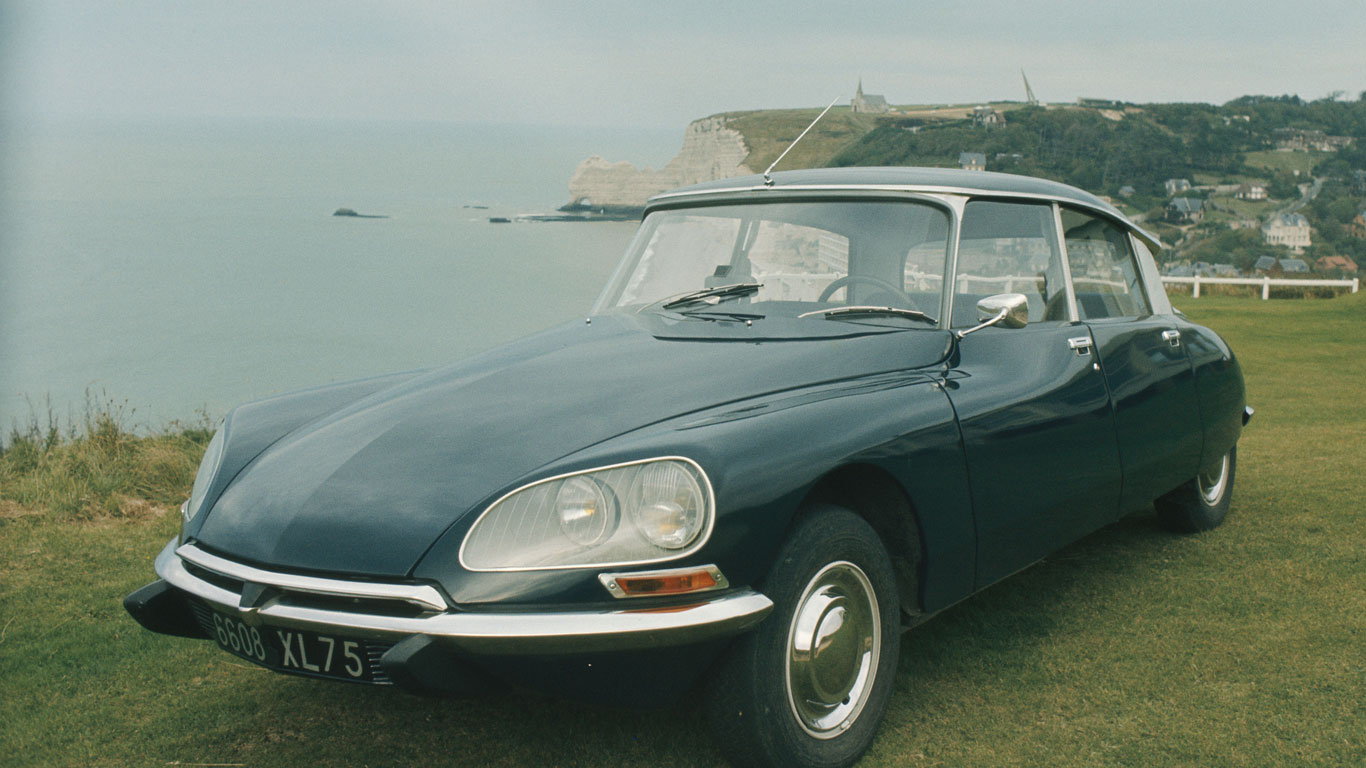
The most significant development of the late 1960s was the facelift of 1967. Citroen called in the help of Robert Opron, who also worked on the Citroen SM, GS and CX. He didn’t have to work too hard on what was already a stunning piece of design.
New, advanced headlights
The key development was the arrival of new headlights, with four lights mounted behind transparent covers. The outer pair were linked to the suspension to maintain a level beam regardless of the car’s movement.
Directional inner lamps
The inner lamps swivelled with the steering, something that’s only just becoming commonplace on cars today.
Swivelling lights not permitted in the USA
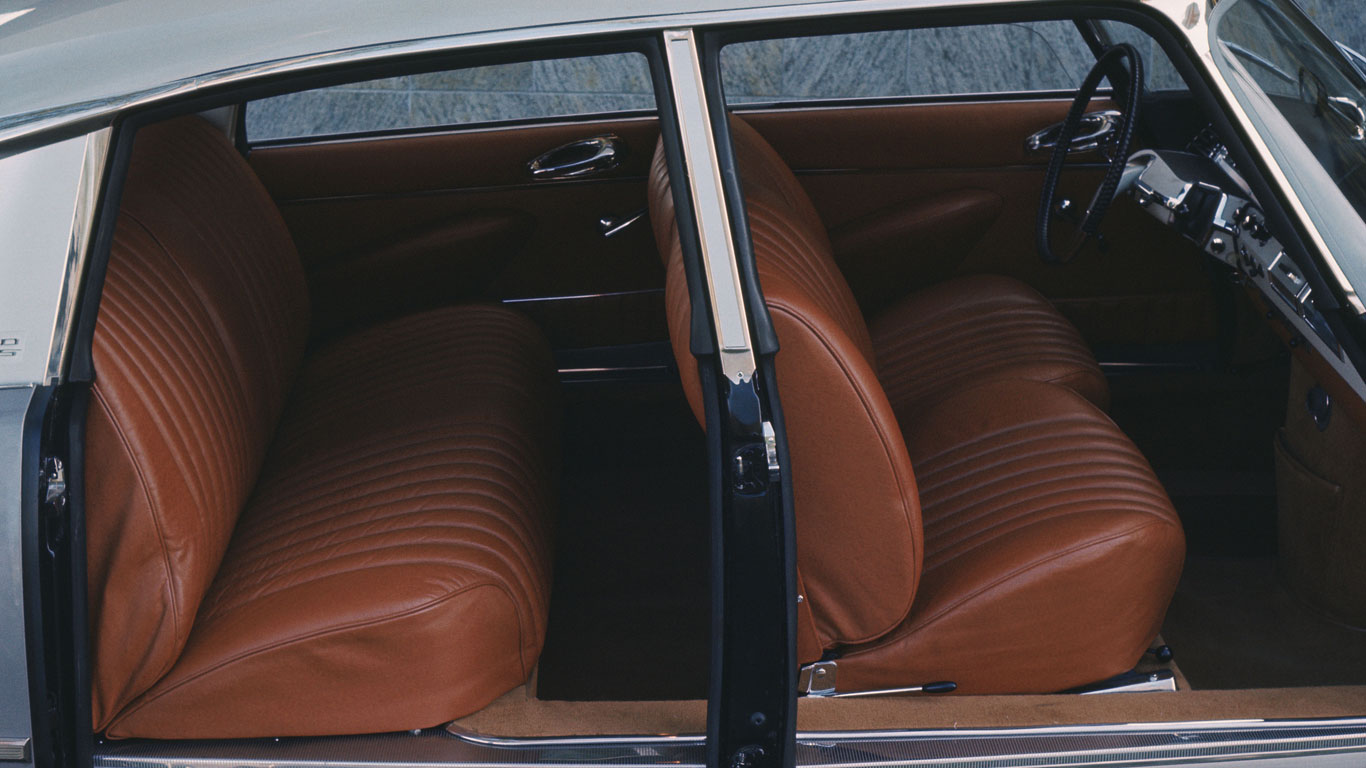
Swivelling lights were not permitted on cars in the United States, so US-registered DSs featured a set of four exposed lights that didn’t swivel. In truth, the DS was never a big seller in the US.
The millionth car
In 1968, Citroen produced the one-millionth DS, a car that was displayed at the flagship store on the Champs-Élysées in Paris. Later it would be given away as a raffle prize to a lucky 22-year-old student.
Sales in excess of 100,000 units a year
By the late 1960s and early 1970s, the Citroen DS/ID remained incredibly popular, with sales figures breaking the 100,000 mark in 1967 and 1970. But there could be no doubt the Goddess was on borrowed time.
The Citroen DS23 of 1973
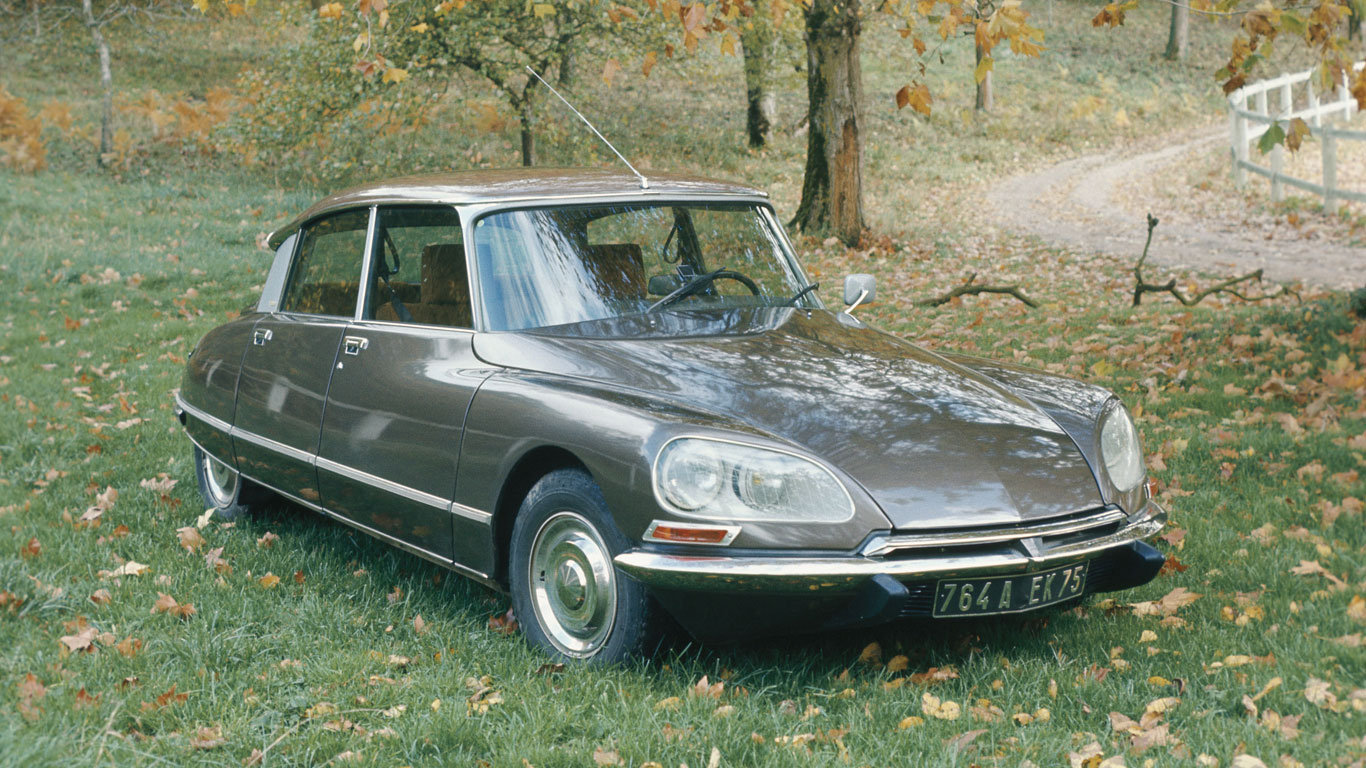
Arguably the ultimate incarnation of the breed is the DS23, which arrived in 1973. Finally, the DS got the engine it deserved, a 2.3-litre engine producing 115hp, or 130hp when equipped with fuel injection.
Last one built in 1975
The final Citroen DS rolled off the production line on the 24th April 1975. A 20-year lifespan, during which time its popularity never waned and few cars could match its blend of supreme comfort and technical innovation.
Nearly 1.5 million cars built
In total, 1,455,746 DSs and IDs were sold, including cabriolets, commercial vehicles, rally cars, ambulances and family transport. Of these, 1,330,755 were built in Paris. An icon of the 20th century? Absolutely.
A lasting legacy
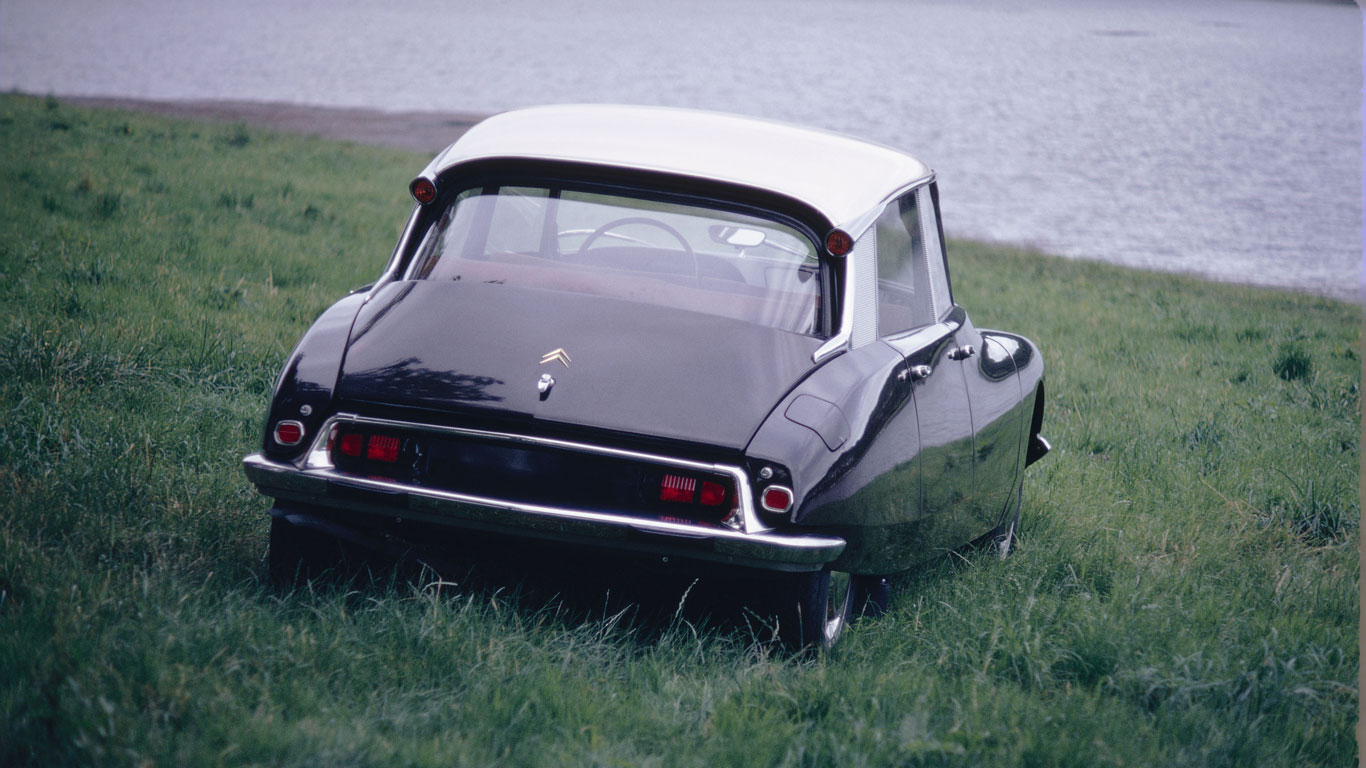
It is said that the Citroen DS was built 20 years ahead of its time and, given it remained a technical masterpiece in 1975, this much is certainly true. Its legacy lived on in the SM, CX, BX, XM and even the Xantia.
A global icon
The Citroen DS is one of a select number of cars that is recognisable across the world. Certainly, the fact it was built in France, UK, Belgium, South Africa, Yugoslavia and Australia may have helped this, but few cars have enjoyed such universal appeal.
A bonafide classic car
Today, the Citroen DS is a highly sought-after classic car, with values on the up. The complexity of the hydraulics means that specialist assistance is often required when keeping them alive, but the rewards are plain to see.
The automotive hall of fame
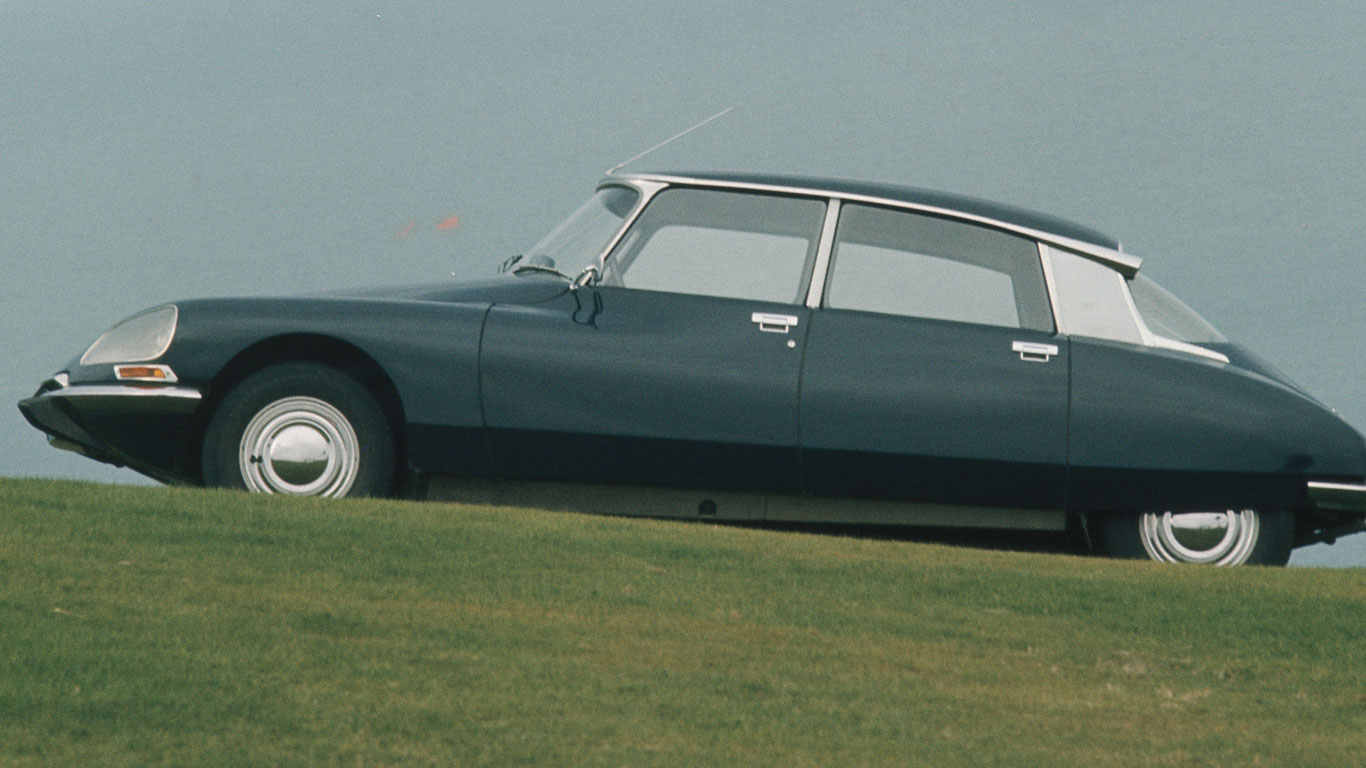
Where does the Citroen DS sit in the automotive hall of fame? Up there with the likes of the Mini, the Beetle, the Jaguar E-Type, the Ford Model T and the Land Rover. Revolutionary cars that shook the world.
Yours for up to £21,000
Practical Classics magazine lists prices ranging between £2,250 and £20,000 for the DS/ID19, with the DS20/21/23s going for a lot more. Indeed, values between £5,000 and £40,000 are more realistic.
Estate versions are highly sought-after
The Safari (estate) versions can command more than the DS/ID19, with Practical Classics putting values between £3,000 and £25,000. As for the Decapotable, the price guide has values nudging £200,000.
One of the most valuable Citroens in the world

Aside from the equally magnificent Citroen SM, this means the DS is one of the most valuable Citroens on the planet. Values even outstrip the Traction Avant.
A technical masterpiece
In the UK, the Citroen DS is viewed as a technical masterpiece and a stunning piece of design. But in its native France, things were different. To the French, it was simply a form of transport. Bargains can be sourced if you’re prepared to look for them.
The DS brand reborn
Today, the DS badge has divorced from Citroen, positioning itself as a luxury and lifestyle brand. DS has opened a flagship store in Paris, where the original DS is on display to sprinkle some authenticity over a thoroughly modern interpretation of the brand.
A tough act to follow
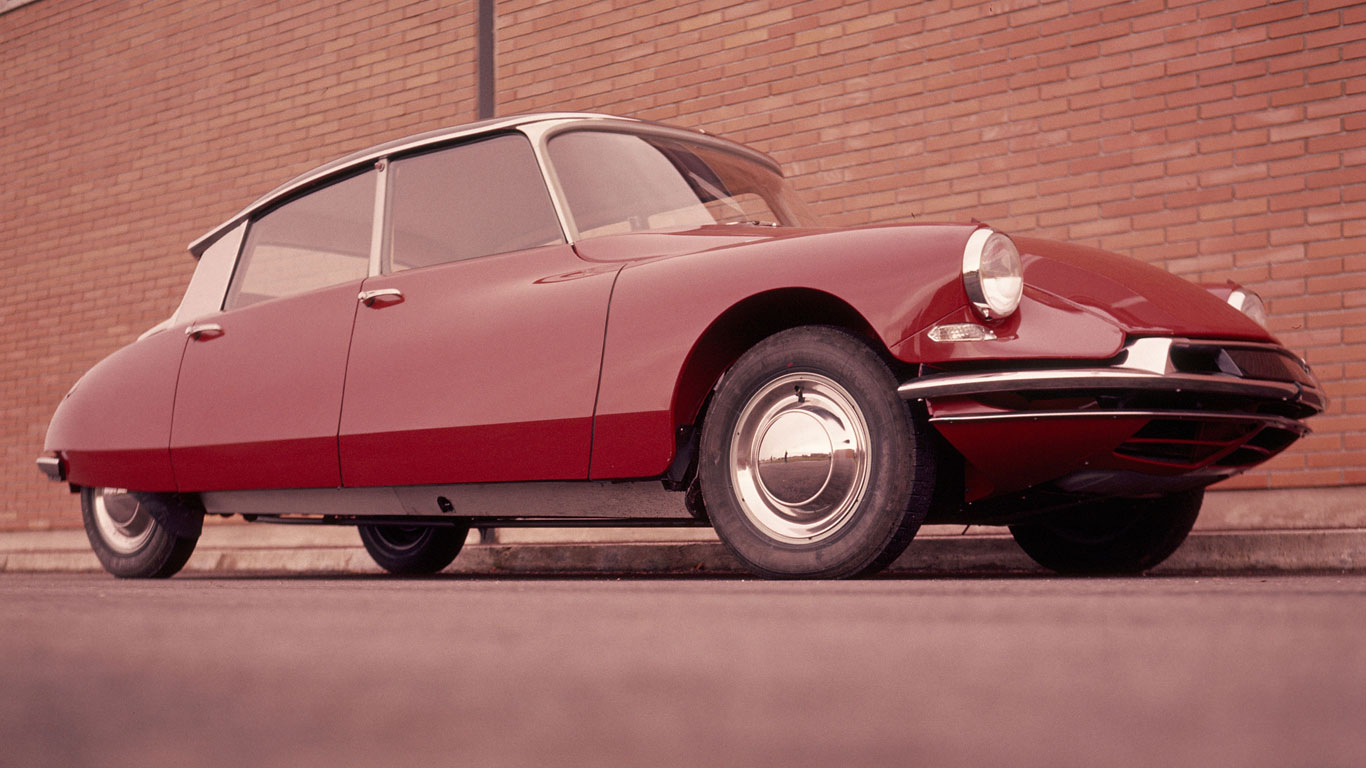
But no matter what the DS brand does in the future, it is unlikely to recapture the magic of the DS19 and the huge impression it made back in 1955. It’s an incredibly tough act to follow.
The DS was simply a working machine
Let’s not remember, the Citroen DS didn’t showcase options and accessories for the sake of it. The DS featured useable technology that served a real purpose. For all its majesty and grace, the DS was simply a working machine.
Sixty-three years young
Ladies and gentleman, we give you the Citroen DS. Sixty-three years young and looking better than ever.
Read more:
- 2019 Citroen C5 Aircross review: quirky crossover plays the comfort card
- DS to consciously uncouple from Citroen
- The ultimate Christmas gift guide for car fans
Love these cars and I’m after one now!
[…] Avant of 1934. Seven years later, Citroen famously wowed the crowds at the same motor show when it unveiled the DS, but the reaction to the 2CV was a little more […]
Thanks Gavin. An interesting read and answered questions about the models and years. Vive La Deesse. Wouldn’t it be nice to be able to fly to France, find one and ship it home to Adelaide? Tell me I’m dreaming.
This is my childhood “dream car”. Now I’m 68 years old and still dreaming to it. Maybe after my death, I’ll be able to have it…